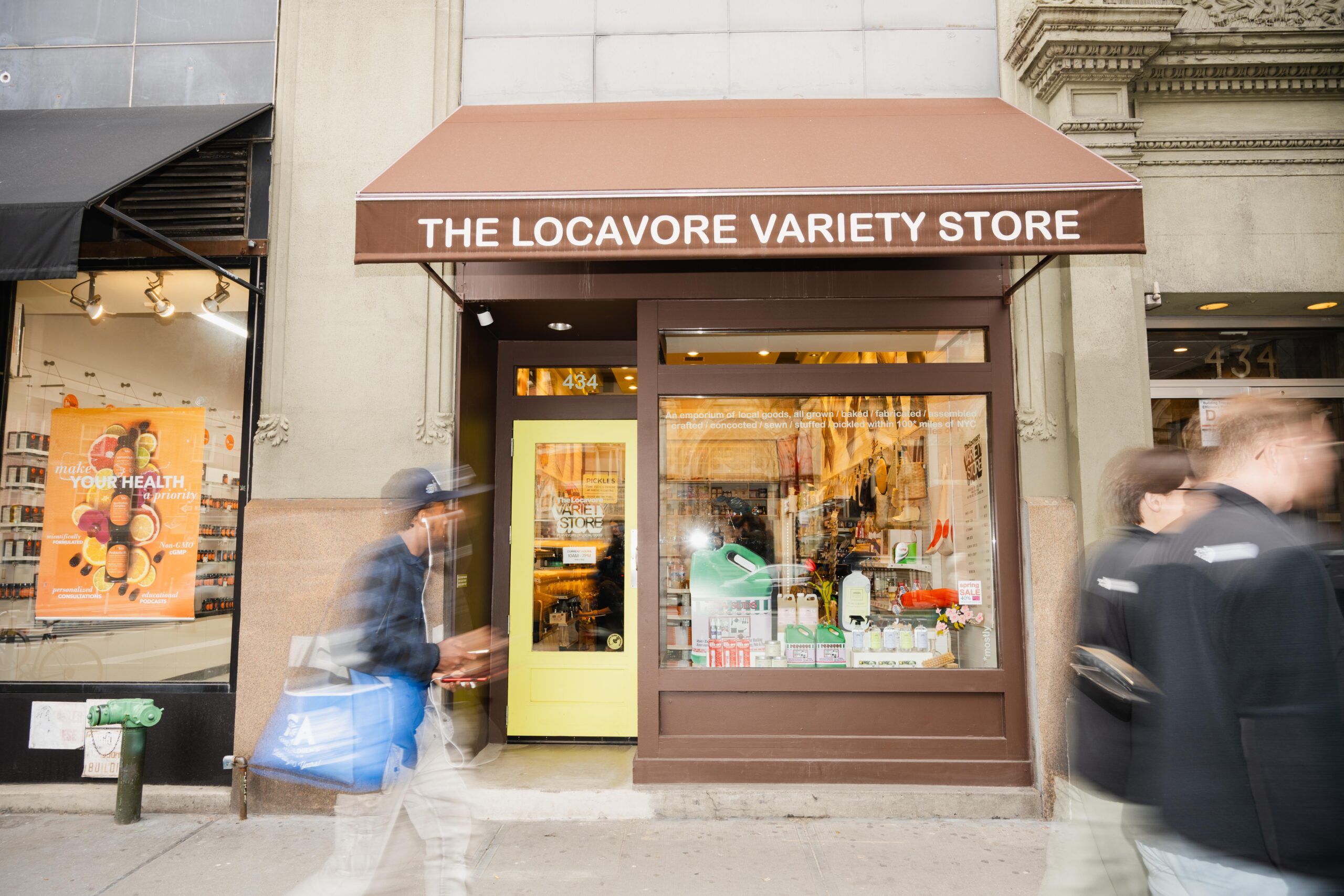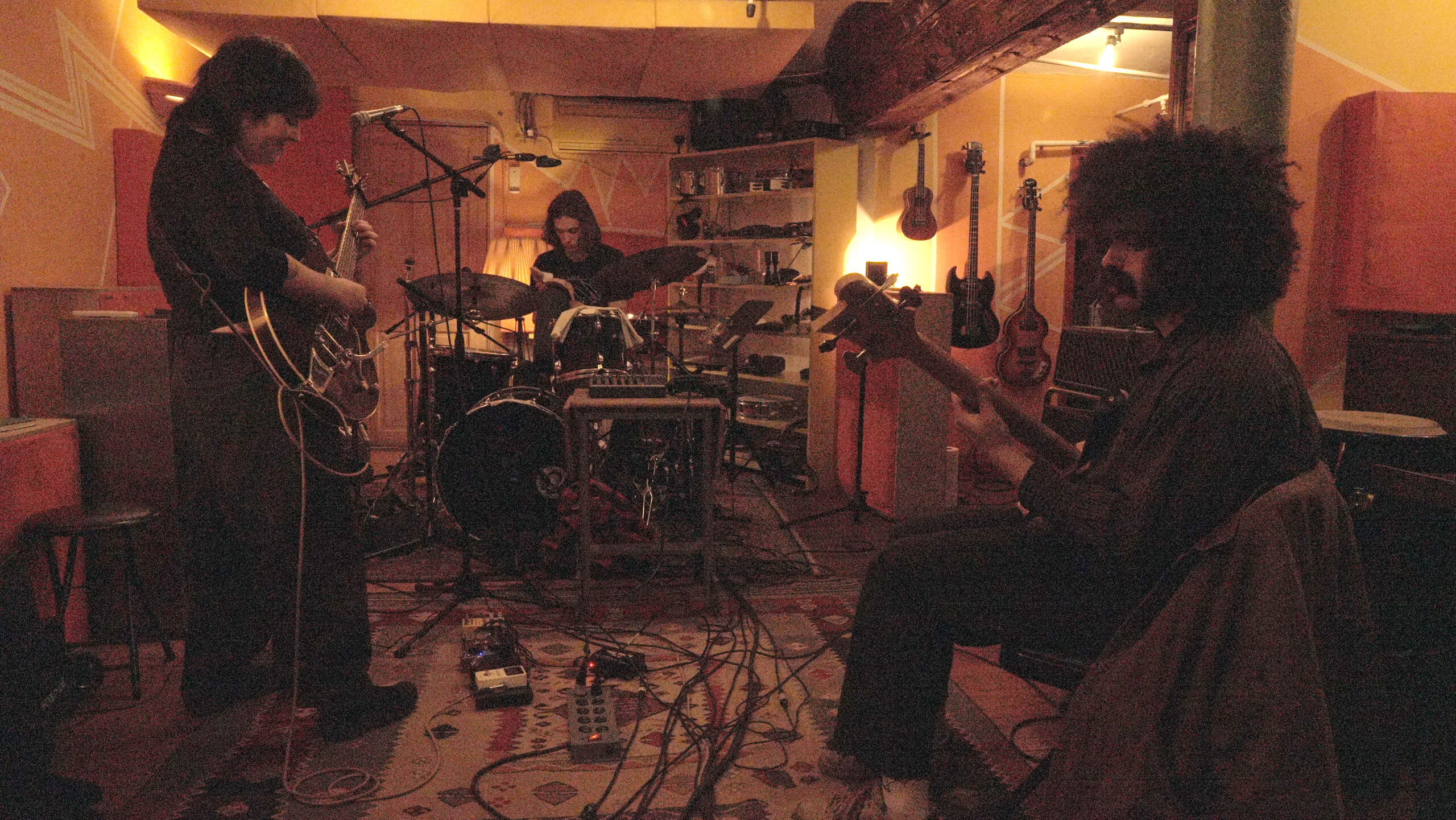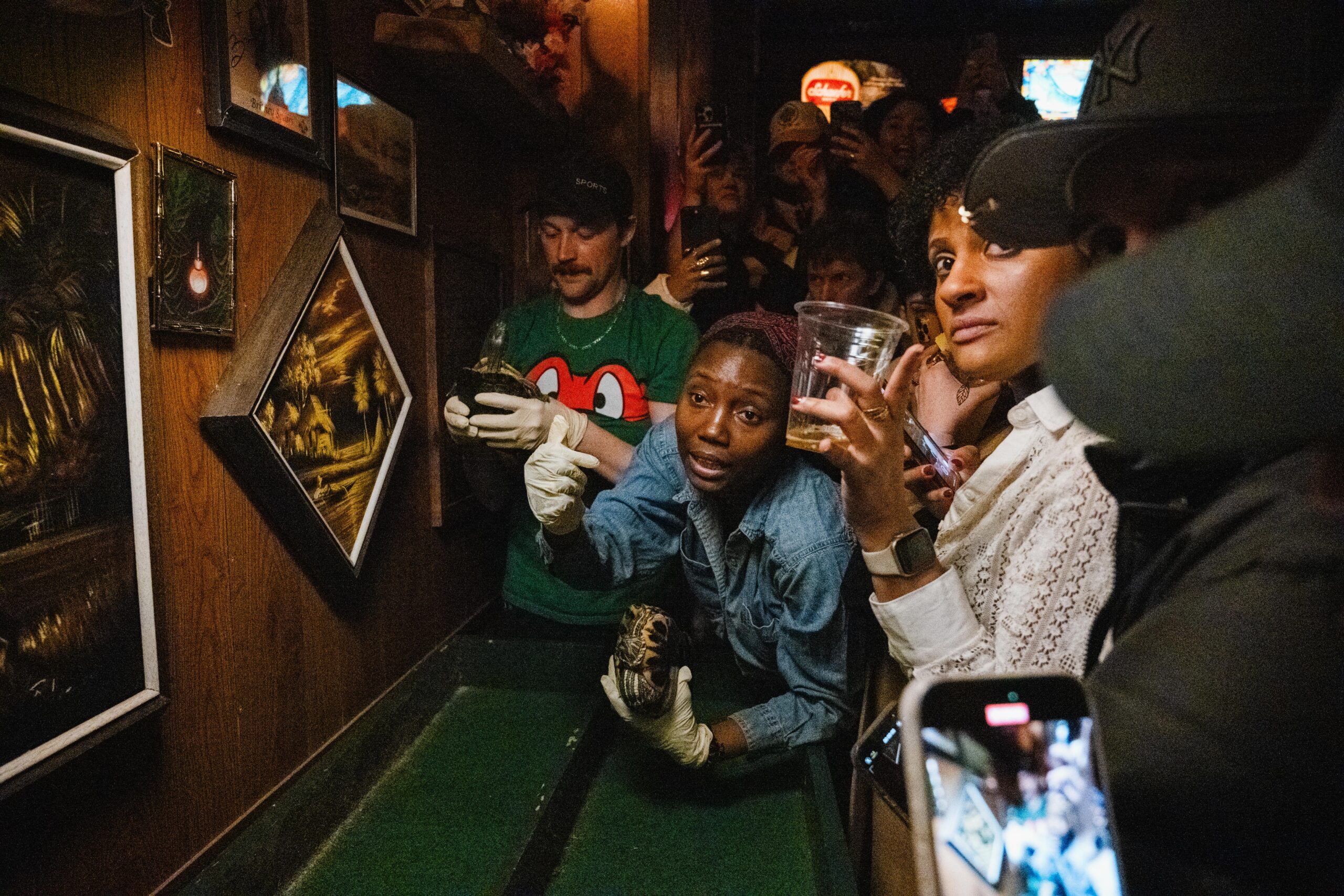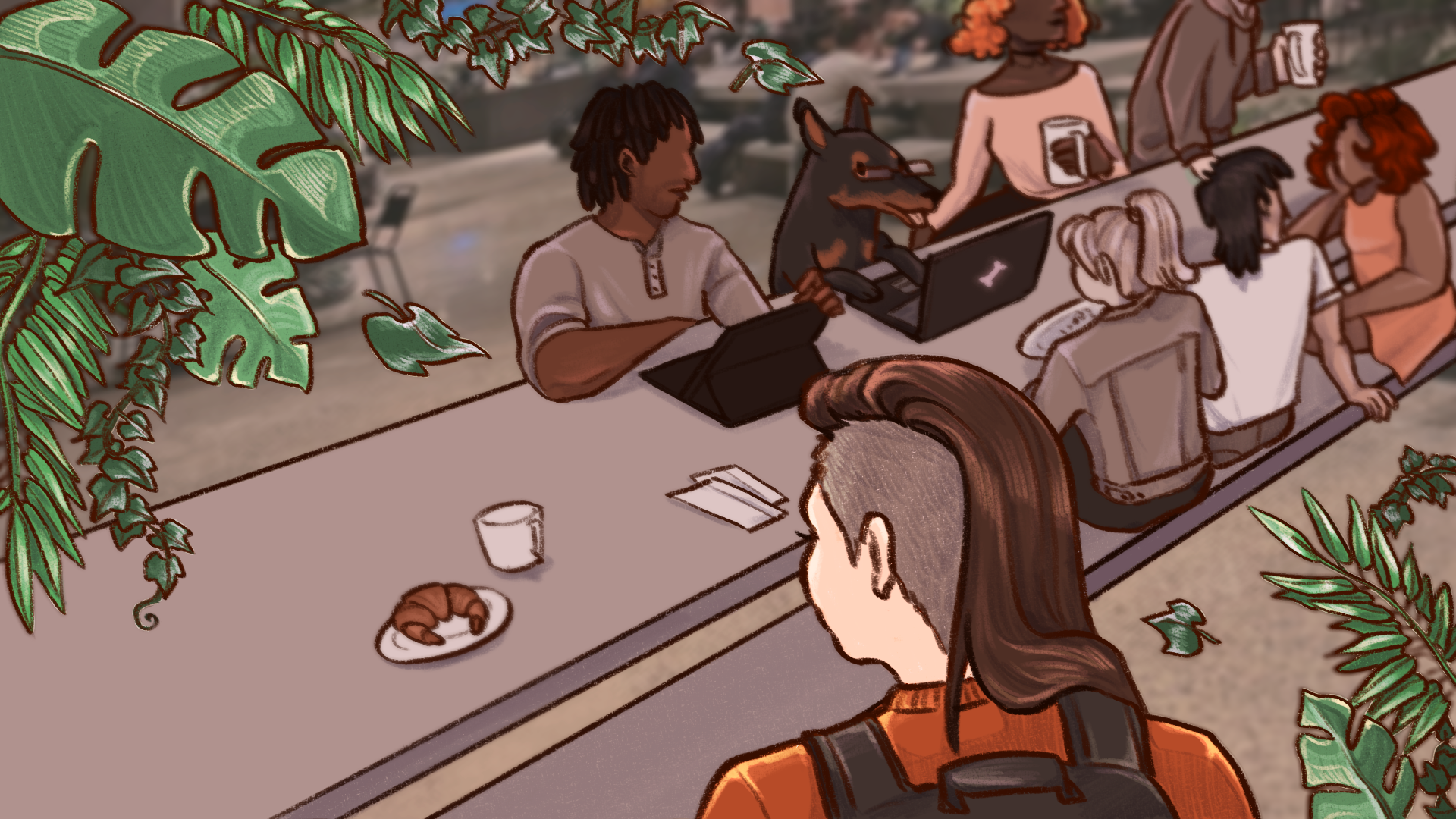The Second Cemetery of Congregation Shearith Israel
Zachary Edinger has spent his life working with Congregation Shearith Israel, the oldest synagogue in the United States. But he’s never laid eyes on one of the more peculiar remnants of the temple’s 357-year-old history: the congregation’s Second Cemetery. On a recent clear-skied afternoon, Edinger, now the temple’s sexton, entered the centuries-old graveyard, a tiny triangular slice of land tucked away on West 11th Street, across the street from Eugene Lang, for the first time. He had, in fact, never seen it.
“This is as exciting for me as it is for you,” he explained as he fumbled with the padlock on the old wrought iron gate. The cemetery, which holds an estimated 30 graves, is only visited occasionally by its single caretaker. No stones lie on the grave markers, as they would by tradition at a Jewish cemetery. Nobody visits. Few people, whether longtime locals or tourists from abroad even take notice — but the Second Cemetery of Congregation Shearith Israel is one of Manhattan’s historic landmarks, a window to a lost world.
The cemetery itself is obscured from the sidewalk by a four-foot high concrete wall with peeling green paint and topped by a wrought-iron fence. The plaque to the right of the gate, colored an oxidized green, announces the name and dates of the graveyard, but little else. A peek over the wall reveals broken headstones with names weathered away, now propped up against the adjacent buildings — some tombs even intersecting their foundations, like Lincoln logs — and a brick walkway lined by a few horizontal grave stones. In the middle of the site stands a seven-foot tall obelisk. Neighboring buildings have come and gone, but two pine trees keep the untouched patch of green in the shade, and dense ivy covers the ground in spring and summer.
Many in the neighborhood concede no knowledge of the cemetery’s very existence.
“I used to live here for years and years when I went to NYU, and I never noticed it,” said actress and Village resident Anna Wood. “Isn’t that funny? But now that I’m looking at it, how could you not notice it?”
“It’s the first time I see it,” said another passerby, a plumber in his 60s, standing next to his son, “and I guarantee, we walked by here at least 20 times.”
*****
But the cemetery’s low profile might be a blessing. Since 1830, when the original rectangular patch of land was carved up to build 11th Street, the corner of the cemetery that remains has gone relatively untouched.
Absent human hands, time has taken its toll. Most of the headstones that remain in the Second Cemetery are broken or illegible. Some only bear initials or partial names like “I.P.”, “S.L.”, or “Rachel”. Yet some names remain. Bernard Judah, buried along the right wall, refers to one Dr. Bernard Samuel Judah, surgeon and druggist.
Near him lie Cherry Moses and Isaac Harby. Benjamin Jacobs joins them, a man known to have petitioned the congregation, without success, that his fiancée — a colonial shiksa — be allowed to convert to Judaism.
The grave of Ephraim Hart, a wealthy American merchant and Revolutionary War soldier, is marked by the only refurbished stone in the cemetery. In 1817, Hart was one of the founding members of Board of Stock Brokers, the ancestor of the New York Stock Exchange.
The obelisk, probably the most notable feature, marks the grave of Joshua A. Canter. Canter was a Danish-born painter who immigrated to Charleston in 1788 from Copenhagen to teach painting. His student, Isaac Harby, opened a private academy in 1817, and hired Canter as the school’s “drawing master.” Canter moved to New York in 1822 after a “slave uprising shook Charleston.” He died before his student Isaac Harby moved to New York in 1828. Harby also died before the end of the decade. Both are buried in the Second Cemetery, a few feet apart.
*****
Like most of Greenwich Village, the Second Cemetery was at one time surrounded by pastures and agriculture. Before the grid overtook Manhattan, the neighborhood was dominated by Milligan Street, which at the beginning of the 19th century, hosted apple orchards and cow pastures. According to “Portraits Etched in Stone,” a history of early Jewish settlers in New Amsterdam and New York by David de Sola Pool, contemporary accounts record cattle wandering into the cemetery in May 1813, due to a hole in the fence, and of apple trees growing on the premises which “induced boys to trespass over the fence to gather apples” in October of the same year.
In the beginning, the second cemetery was a back-up, reserved for those who died of illness, specifically yellow fever, or without ties to the temple. The first man to be interred at the Second Cemetery was a yellow fever victim named Wolfe Pollock. Samuel Hart, the second burial, died “at Carolina.” His body was brought back to New York by water and, because he was without a family in the congregation, was buried in the second cemetery. The third burial, Abraham Garcia, was a French seaman who died of “ill-treatment at sea”.
The congregation’s original cemetery from the 17th century is lost, buried forever under the massive modernist towers of the financial district, mentioned only in a few record books. The so-called First Cemetery is at Chatham Square, also in the Financial District, and is largely still intact.
The Second Cemetery filled slowly until the fever epidemic of July 1822. A city ordinance passed later that year banned burials south of Canal Street, rendering the First Cemetery at Chatham Square defunct. Soon, the Milligan Street location became the primary burial grounds for the congregation.
In 1827, 11th Street was ordered to be built across Milligan Street and through the Second Cemetery. The congregation fought the city for years, hoping for the same success as Henry Brevoort, who blocked the passing of 11th Street through the Grace Church property between Broadway and 4th Avenue.
In 1830, the City of New York paid the Congregation Shearith Israel $1,099 for the property and damages of 80 to 100 bodies disturbed. Eleventh Street was built much higher than the level of the cemetery, requiring a wall to be built, the ground filled up, and the headstones moved to a higher altitude. The remaining graves lie unusually deep.
*****
The 11th Street cemetery is not a unique case. Much of New York is built on the long-forgotten graves of its past.
Washington Square Park was once a potter’s field, a place for the burial of unknown and indigent people, and still holds an estimated 20,000 bodies.
Many of the yellow fever victims in Manhattan cemeteries were disinterred in the first half of the nineteenth century and moved or disposed of in response to public hysteria and fear of contagion.
If the bodies were not removed, then they were paved over and forgotten about, and are often discovered by Con Edison or a construction crew. The Second Cemetery of the Congregation Shearith Israel is a rare exception.
Evan Rapport, professor of Jewish studies and music at The New School, stressed the light the cemetery shines on the importance of New York’s Sephardic Jewish history.
“Most people don’t know that in the early 1800’s there weren’t that many Jews in New York,” he said, “and the ones that were here were mostly Sephardic.”
When the Jewish people of Spain and Portugal were expelled by the inquisitions of the 15th century, most of them fled to either Amsterdam or Recife, Brazil. When, in 1654, the Portuguese captured Recife from the Dutch, Jews fled to other Dutch colonies — including New Amsterdam.
The small community named themselves Shearith Israel, or ‘remnant of Israel,’ and became the first Jewish congregation in North America. They meeting in rented spaces, and in spite of persecution by Governor Peter Stuyvesant, slowly became prosperous by establishing trading ties with Sephardic Jews around the world.
*****
More than a third of a millennium later, Shearith Israel and its history, littered around the city like grains of sand, are as an astral link between New York’s beginnings and its present.
Edinger explains that those buried at the cemetery most likely have living descendants in the current congregation.
“We have four families going back to colonial days, so there’s bound to be somebody with family in here,” he said, adding that many more families have been with Shearith Israel since the 19th century. Edinger’s own family has been in the congregation for six generations. His grandfather was once the sexton, looking after the building and providing secretarial functions, as well as two generations before him, making Edinger the fourth generation in his position.
At Saturday services, Edinger, along with the president of the congregation, wears a [historical costume of] top hat and “morning coat” with tails. The rabbis wear “19th century Dutch clerical garments”, he says. “This sort of pomp and circumstance isn’t real common with synagogues,” said Edinger. “We’re sort of, you could say, high church.”
Their current building, a majestic neo-classical structure, is rife with artifacts from the last three and a half centuries. Notably, a prized pair of candlesticks from before the time of the arrival in New Amsterdam, which hide within themselves a goblet and a bowl for the wine and spices of the Havdalah recitation, at the conclusion of Shabbat.
Such artifacts, like the cemetery itself, remind us both of our ancestors and of the hidden history that surrounds us. They can go unseen for years before their true stories are revealed.
Back on 11th Street, across from the New School’s building, Sexton Edinger’s unlocking of the gate — his breaching of the veil of quiet secrecy that surrounds the cemetery — attracts attention from passersby who have, up to this point, never thought to inquire.
“I’ve never seen inside,” said a man, hunched over his cane on the sidewalk. Standing next to his wife, both were bent forward, squinting into the shady corner. “Now’s your chance,” replied Edinger, as the old gate swung open. “Once in a lifetime.”
Additional reporting by: John Brooks, Kareem Samuels, Stephany Chung








Leave a Reply